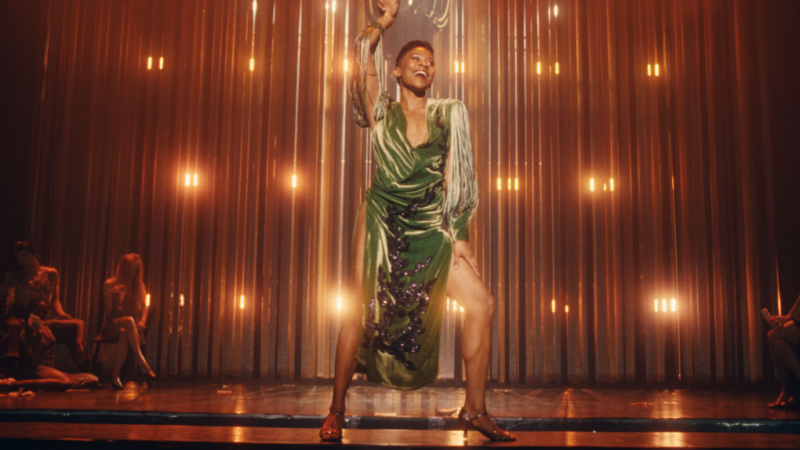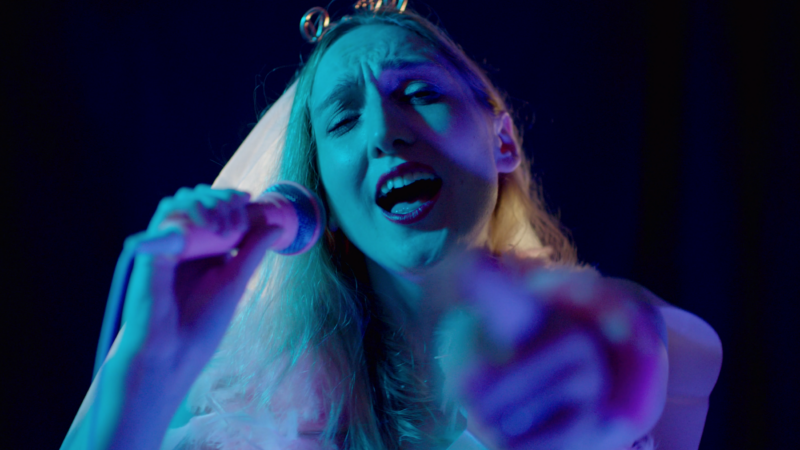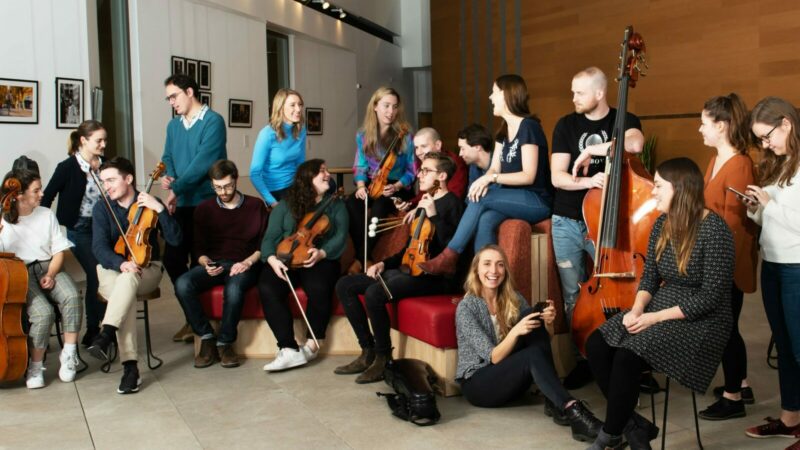As part of a wider Digital Mentoring and Peer Support Programme, The Space and Creative Scotland hosted two taster webinar sessions on 27th and 29th October.
Case studies from the South Glasgow Heritage & Environment Trust (SGHET) and the Lammermuir Festival were presented and Producer and Director Gill Davies gave advice on reaching isolated rural communities via live streaming and local partners.
How the South Glasgow Heritage & Environment Trust (SGHET) found and developed a new audience-based online
with The Space’s associate, Jen Anderson, presented by Rob Lindsay, Head of Audiences for The Space
- Jen first worked with SGHET to identify their desired target audience and check that it was feasible to reach them
- She then developed two key ‘personas’ that covered demographics, life stage, personality characteristics, lifestyle, attitudes, principles and beliefs, activities and interests, social life, career, consumption style and sources of influence. This allowed greater targeting of copy and content.
- Jen then carried out digital behaviour research on these target markets to understand their motivations for digital engagement, identifying digital touchpoints and their digital journeys.
- The next step was a full audit of SGHET’s current marketing channels, to evaluate their content and approach – the challenge was moving from primarily offline communications to a culture of using online ones.
- Jen set up new digital channels for the Trust, and developed some simple visual branding to ensure communications were consistent across digital channels. This can be as simple as choosing one or two colours to use as part of your digital ‘brand’.
- A new Facebook page and Instagram account were set up alongside a Mailchimp account for email marketing. All the visual elements were designed and new copy written for the biographies on these, that retained consistency across all channels and they all linked to each other.
- Finally a digital strategy was developed – Jen worked with the charity to establish the types of content that were viable with the resources available before developing a range of content that would be attractive for the target audience(s) and could work well on the selected platforms.
Useful links:
The Space’s Online Audience Toolkit – find and develop your online audiences with practical tips on getting started.
Creating short-form social media content – ideas, guidance and some fundamental dos and don’ts around developing and sharing great short form, primarily social media content.
How the Lammermuir Festival successfully moved to a monetised online festival in summer 2020
James Waters, Artistic Director, Lammermuir Festival
- In response to Covid-19 restrictions on live performance, Lammermuir Festival had to move very quickly to an online-only festival
- The linking up of ticketing, website and filming company was key and they were fortunate to have partners in this who were already set up for this type of work. They were surprised by how affordable the technical aspects were
- They reduced the number of performances and filmed in a single venue but aimed to preserve the same type of programming as their usual festival
- They decide to charge for content as audiences value what they pay for more
- As one of the first UK organisations to charge for festival content, they had very little reference points for pricing. They offered a per-concert price and a festival pass for all 12 concerts. With hindsight they were at the lower end of the price range that organisations adopted and actually had audiences contacting them to say that they were undercharging. They had similar numbers of paying audiences to what they would usually have at their live festival
- A significant number of customers opted to donate in addition to purchasing a ticket
- Vimeo was the platform they used and seems to be the platform of choice for online classical music delivery (using YouTube can cause content to be removed for rights reasons by its algorithms in the middle of a live-stream, even if you have properly secured online rights)
- They adopted a simple approach to marketing, via their usual mailing list and some basic social media marketing – in future years they would look to expand on this
- Creating an online festival is feasible if you already have an audience that is loyal to your organisation as a starting point. Doing it from scratch in a crowded online market for cultural content would be challenging
- The project was very successful at strengthening their relationship with their audience. It significantly increased the number of people in their donor list. In advance of making the decision to go online only, they kept their audience regularly updated about their plans
- They had very positive audience feedback and know anecdotally that they reached audiences, including internationally, who had been unable to attend their live programme in the past due to travel logistics
- Irrespective of Covid-19, they plan to have a digital element to future festivals now that they have seen the value of this as an aspect of their programme
Useful links:
Visit Scotland Case Study on the Lammermuir Festival 2020
The Space’s Digital Rights Toolkit
Reaching isolated rural communities via live streaming and local partners
Gill Davies, Producer, Director and Mentor
- The Hebridies Ensemble wanted to reach people in isolated rural areas that don’t always have access to a nearby concert venue.
- Live streaming was the initial solution to this, however audiences fed back that they missed experiencing concerts as a community.
- Following some research, Gill sourced some local venues that would potentially be interested in streaming a concert from the Perth Concert Hall to their venues.
- Considerations were equipment – did they have capacity, equipment (a projector) and a decent connection?
- Internet connection was one of the main barriers to participation – many venues were interested but knew that their connection was unlikely to be good enough.
- The performance was adjusted with the live stream/community viewers in mind: a host was brought in specifically for the live stream (which provided some content during changeovers) and the host even did callouts to particular centres or venues to make people feel part of the event.
- Testing was key – although time-consuming, running as much technical testing as possible is important to ensuring any issues are addressed.
- There are some things that may help address connection issues if looking at streaming in rural areas – finding out locally when the busiest time of day is for internet use, and avoiding times when pressure on the connection will be high – using an ethernet cable (instead of wireless) may help too.
- There is a real appetite in rural communities to engage in performances, so it is worth considering as an approach for reaching more isolated communities.
Useful links:
The Hebrides Ensemble live stream recordings can be seen online
A low-fi and low-cost guide to live streaming– Jason Crouch, a freelance digital consultant with expertise in live streaming and a PhD in contemporary arts and technology, shares his tips on how to get started.
Webinar recording – Live streaming and low-cost capture – what to think about when planning a capture or live-stream
There are some great resources from the SCVO on supporting digital inclusion https://scvo.org.uk/support/digital/guides/digital-inclusion
Scottish Rural Network
And the Touring Network
Rural and local cinema resources and links through Film Hub Scotland: and Regional Screen Scotland
Some useful links suggested by our attendees:
How to cast to your TV for a shared family experience – from the RSNO about
‘A strength of an online offer could be the ability to allow audiences access to events in unique spaces which are not normally open to the public Arika did this with Resonant Spaces back in 2006 (live events)
Arts Marketing Association
Creating great content on a budget
Arts Marketing Festival
Culture Hive
How useful was this resource?




